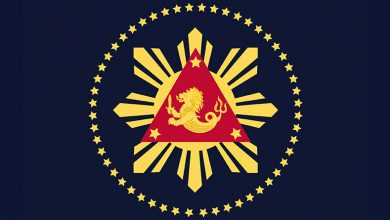Drama
The traditional theatre of the Philippines took a variety of forms, the most popular of which was the carillo, a shadow theatre using figures of papier-mâché; performances were usually given at the end of the harvest. The duplo was a kind of witty dialogue featuring well-known figures of the day or dealing with matters of topical interest.
In the moro-moro the Spaniards were depicted fighting the Muslim infidels, who were inevitably defeated. The actor’s entrances and exits are stylized, the gestures and movements broad and exaggerated and the poetic lines and verses recited in declamatory, sing-song tone with religious adherence to rhythm and intonation. The cenaculo, performed in front of churches, was a representation of Christ’s Passion. It narrates a long sequence of episodes from the Old and New Testaments with special emphasis on the life, suffering and resurrection of Jesus Christ; the tradition is still maintained during Holy Week. The zarzuela is a Spanish lyric-dramatic genre that alternates between spoken and sung scenes, the latter incorporating operatic and popular song as well as dance. It is originally performed for the entertainment of Spanish noblemen after the hunt, was introduced to the Philippines in the second half of the 19th century.
The zarzuela latter became a potent means of expressing the nationalist feelings of the Filipinos after the coming of the Americans; and some works which were considered too subversive, like Matanang Cruz’s Hindi Ako Patay (I am not dead) and Severino Reyes’ Walang Sugat (Scar-free), were banned and their authors imprisoned. This latter work is set during the Revolution, and shows a return to the tradition of a theatre which also included music, singing and poetry. Hermogenes Ilagan was another writer who revitalised the art of the zarzuela, as in Dalagang Bukid (Country Maiden). In his dramatic work Tanikalang Ginto (The Golden Chains) Juan Abad denounced the United States for purporting to help the Philippines but later enslaving them instead of recognising their independence. In his three-act drama Kahapon, Ngayon at Bukas (Yesterday, Today and Tomorrow) Aurelio Tolentino protested against American control and called on the nation to take up arms and drive out the invader; for this he was condemned to life imprisonment in 1904, but was pardoned in 1912.
During the 1930s, drama flourished in all three national languages. Jesus Balmori, writing in Spanish produced Ayes de Rapina (Birds of Prey), a political satire; Wilfredo M. Guerrero wrote Women are Extraordinary in English; while Julian Balmaceda, concerned with the difficulties of peasants caught in the clutches of the moneylenders, wrote in Tagalog Bunganga ng Pating (In the Shark’s Jaws). During the Japanese occupation plays in Tagalog came to the fore. The zarzuela has only recently returned to the stage with revivals of productions of the 1930s.
Since the 1960s the theatre has been concerning with national, social and political problems, in a religious and moralising context. Novelists and short story writers have also shown their talent for the theatre, like R. Sikat with his Mga Kaluluwang Naghahanap (Souls in Search) and D. Landicho with Daga at Mansanas (Mice and Apples). Political nationalism finds expression in T.S. Manoloto’s Mga Yagit (Rejects), L.R. Banag’s Sa Mga Kubo ng Agila (In the Eagle’s Talons) and F. Samonte’s Huling Pasiya (Final Judgment).
Dramatists writing in English, like Wilfrido M. Guerrero, are concerned with the problems created by lack of tolerance and understanding. Severino Montano prefers short pieces, either comedies or tragedies; his Lonely in my Garden has been performed in the United States. Nick Joaquin has made his name by his plays, short stories and poems, like his Portrait of the Artist as a Filipino, an elegy in three scenes.




